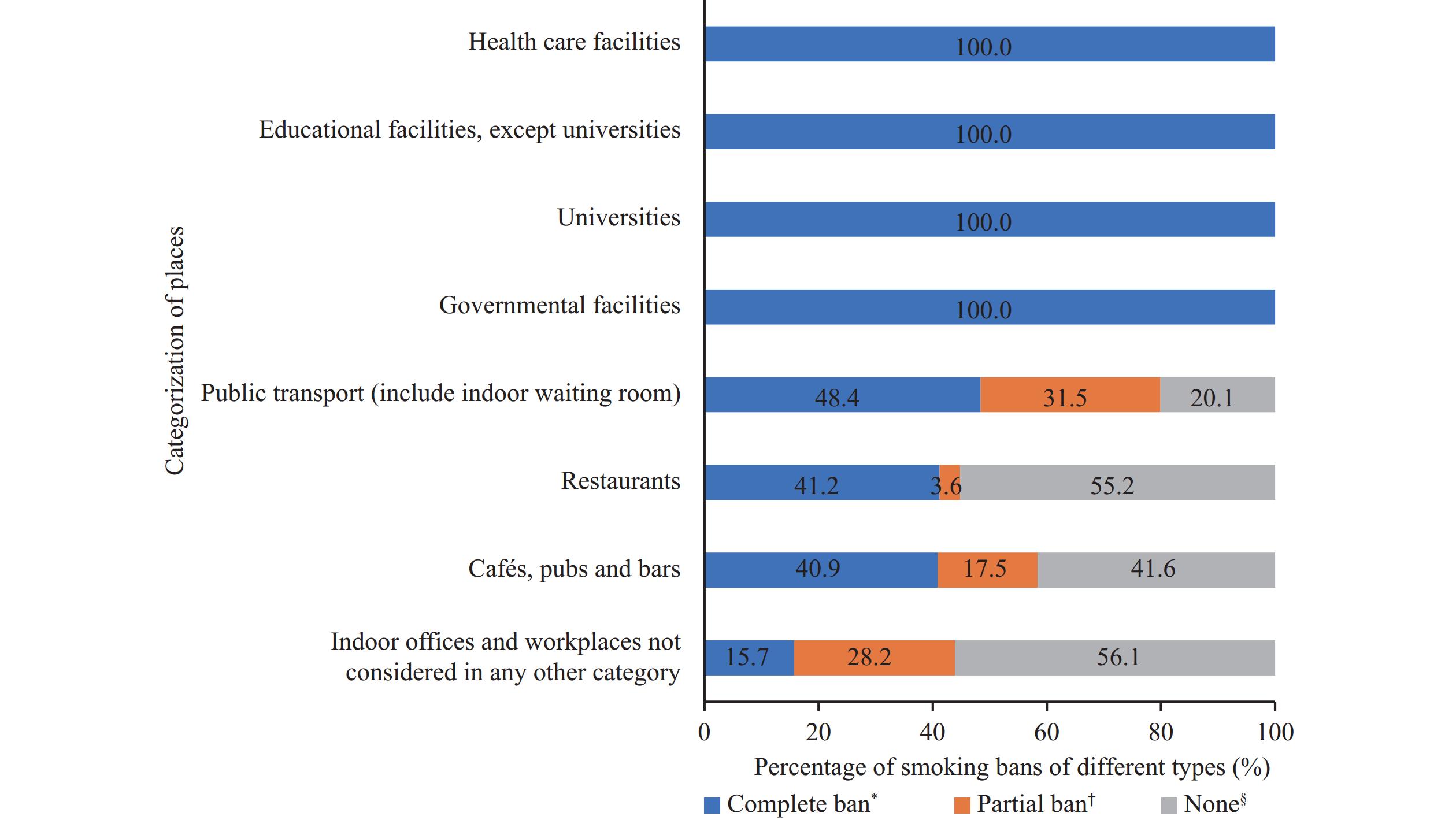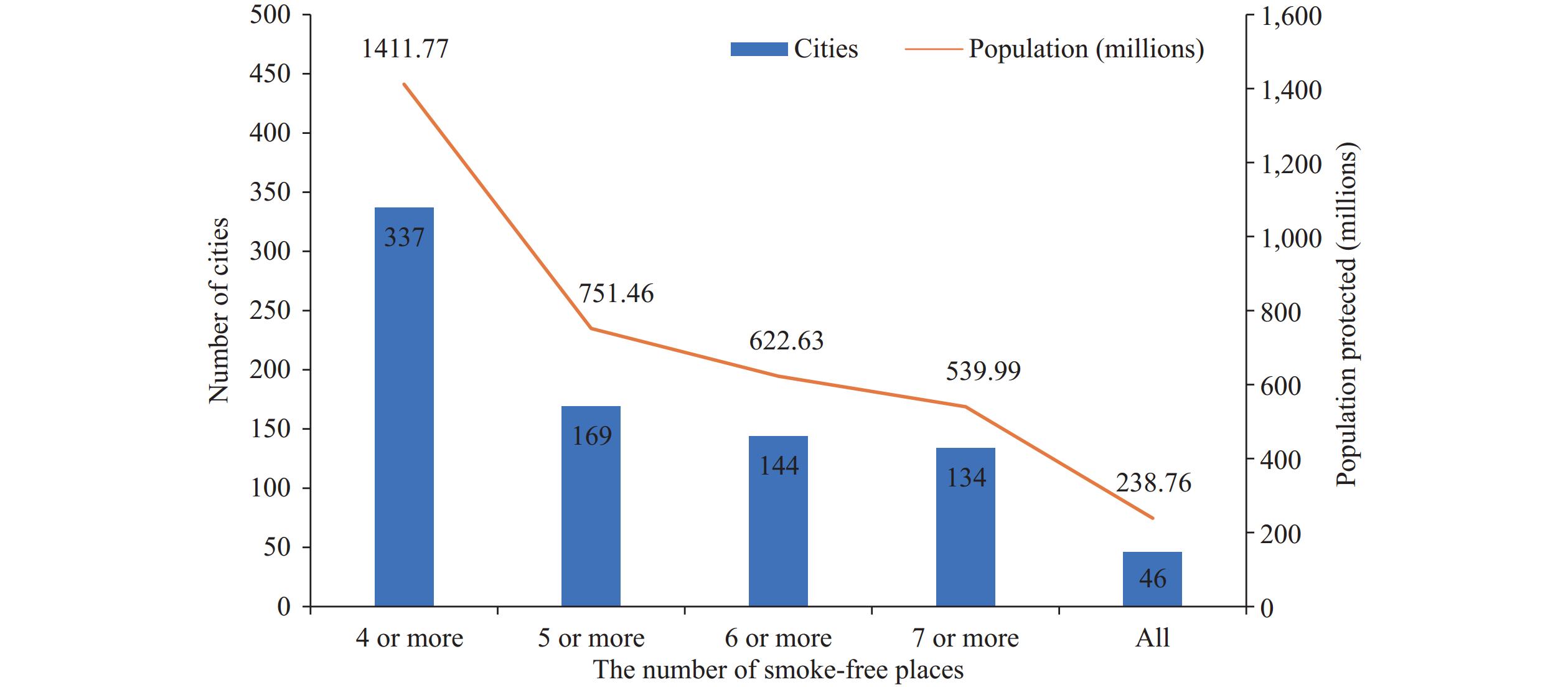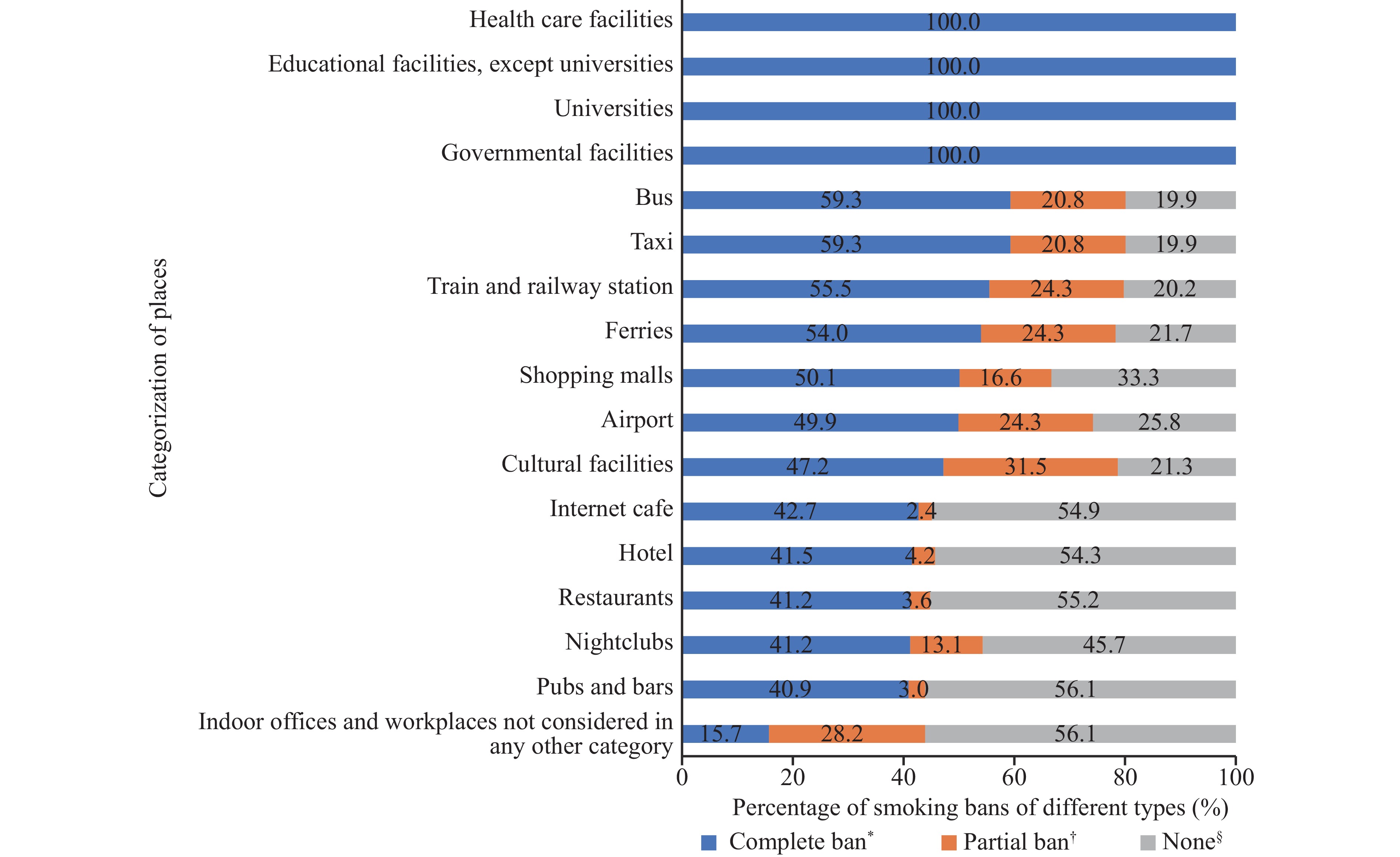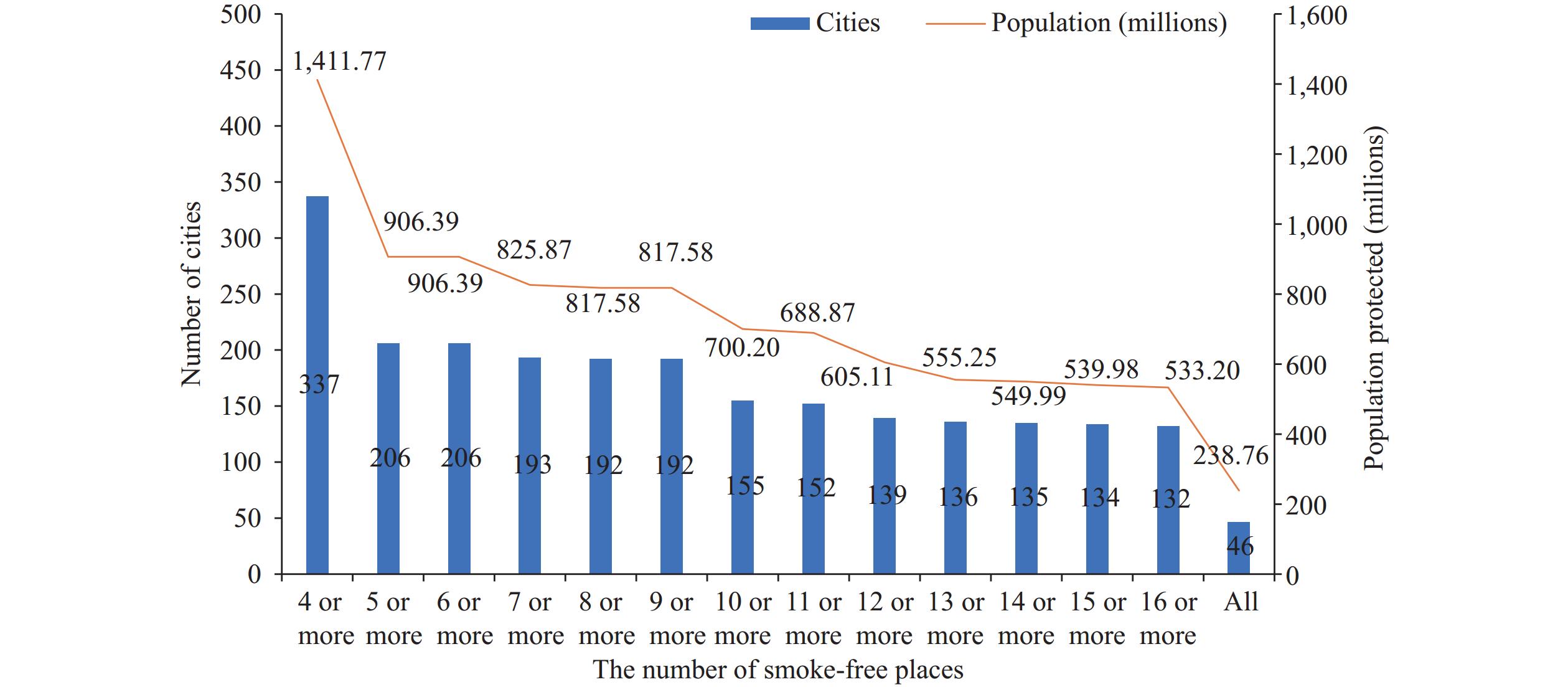-
Smoke-free regulations play a crucial role in protecting people from the harmful effects of tobacco smoke. The “Healthy China Initiative (2019–2030)” designates tobacco control as a special action area and establishes a target that by 2030, comprehensive smoke-free environment regulations will protect 80% or more of the population. This study analyzes smoke-free regulation texts to provide an evidence base for enhancing the quality of smoke-free legislation. This study examined smoke-free regulation texts issued by provincial and municipal governments in China through December 31, 2024. The analysis included specialized smoke-free regulations, patriotic health regulations, and regulations promoting civilized behavior. The screening process excluded repealed regulations, rules, normative documents, and city regulations lacking provincial-level legislation or explicit smoke-free provisions. Through comprehensive textual analysis, the study identified deficiencies in China’s smoke-free legislation and developed recommendations for future improvements. Comprehensive analysis integrating provincial and municipal smoke-free regulations revealed that 46 cities are protected by comprehensive smoke-free regulations, covering over 200 million people. Regarding smoke-free environment establishment, healthcare facilities, two categories of educational facilities, and government facilities demonstrated optimal performance, all achieving 100% comprehensive smoke-free standards. However, progress in establishing smoke-free environments in other locations varies significantly. National-level regulations are expected to effectively address these disparities. We recommend formulating legislation at the national level and gradually shifting tobacco control management from a place-centered to a people-centered approach.
-
Smoking and exposure to secondhand tobacco smoke pose significant health risks, leading to death, disease, and disability. Scientific evidence has conclusively demonstrated that there is no safe level of exposure to secondhand smoke (SHS) (1). The World Health Organization (WHO) reports that of the 8.7 million tobacco-related deaths annually, 1.3 million occur among non-smokers exposed to SHS (2). Implementing comprehensive smoke-free regulations has proven effective in reducing exposure to tobacco smoke (2), subsequently decreasing both the incidence and mortality of smoking-related diseases while protecting the rights of non-smokers. By 2022, 74 countries had implemented smoke-free laws at the optimum practice level (2).
The Framework Convention on Tobacco Control (FCTC) mandates that each Party shall adopt and implement effective legislative, executive, administrative, and other measures within their national jurisdiction, while actively promoting these measures at other jurisdictional levels. In June 2019, the State Council formulated the "Healthy China Initiative (2019–2030)", designating tobacco control as one of its special actions and establishing the goal that by 2030, comprehensive smoke-free environment regulations would protect 80% or more of the population. These measures aim to shield people from tobacco smoke exposure in indoor workplaces, public transport, indoor public places, and other appropriate public venues (3). Since the FCTC’s implementation in China, local-level legislation has progressed significantly in both quantity and quality. Despite the absence of national-level smoke-free regulations, the advancement of smoke-free legislation at provincial and municipal levels holds significant importance. Currently, China has 31 provincial-level administrative divisions (PLADs) and 333 prefecture-level cities. However, no research has yet examined whether these PLADs and cities have relevant smoke-free regulations, or whether such regulations comply with the Healthy China Initiative’s requirements for comprehensive smoke-free environments. At the national level (4–6), through the promulgation of relevant regulations, the proportion of complete smoking bans in educational facilities, healthcare facilities, and governmental facilities has reached 100%. This study analyzed smoke-free regulation texts through December 2024 to evaluate the stipulations regarding smoke-free places in current regulations and their effectiveness in protecting people from SHS, providing policy recommendations for further achieving the goals of the Healthy China Initiative.
-
This study analyzed smoke-free regulation texts issued by provincial and municipal governments in China through December 31, 2024. The analysis encompassed specialized smoke-free regulations, patriotic health regulations, and regulations promoting civilized behavior. Data were sourced through Baidu, the Legal Regulations Retrieval System of Peking University Law Treasure, and official government websites. The screening process excluded repealed regulations, rules, normative documents, and city regulations lacking provincial-level legislation or explicit smoke-free provisions. If a city had no smoke-free legislation but the provincial level did, the city was regarded as having smoke-free legislation. If both provincial and city levels had smoke-free legislation, the city’s legislation was analyzed in combination with the provincial legislation. Finally, the analysis incorporated regulations on smoke-free party and governmental institutions, smoke-free hospitals, and smoke-free schools (4–6). The analytical methodology comprised evaluating the comprehensive smoke-free status across cities using 8 types of places and 17 specific places. The 8 types of places include: health care facilities; educational facilities (except universities); universities; governmental facilities; indoor offices and workplaces not considered in any other category; restaurants; cafés, pubs and bars; and public transport (include indoor waiting room) (2). The 17 specific places encompassed: health care facilities; educational facilities (except universities); universities; cultural facilities; governmental facilities; indoor offices and workplaces not considered in any other category; bus; taxi; train and railway station; airport; ferries; internet café; restaurants; shopping malls; nightclubs; pubs and bars; and hotel (7). Comprehensive smoke-free legislation was defined as the total prohibition of smoking in indoor public places, indoor workplaces and public transport, with no allowance for designated smoking areas or rooms (DSRs) (2,7).
As of December 31, 2024, a total of 398 tobacco control-related laws and regulations have been enacted across China. These comprise 36 tobacco control-specific regulations, 81 regulations concerning patriotic health, 272 civilized behavior regulations, and 9 regulations in other areas. 24 PLADs (including municipalities directly under the central government and autonomous regions) have established provincial-level smoke-free legislation, while 273 cities above prefecture level have implemented municipal regulations. Analysis at the provincial and city levels, with each PLAD and city included with one regulation, initially included 297 smoke-free regulations, with the highest tobacco control standards as the main criterion. After excluding regulations lacking explicit tobacco control provisions or clearly defined smoke-free zones, 140 regulations remained for analysis. These consisted of 36 dedicated tobacco control regulations, 38 patriotic health regulations, 65 civilized behavior regulations, and 1 other regulation. The 140 regulations encompass 22 provincial-level legislations (including municipalities directly under the central government and autonomous regions) and 118 prefecture-level city legislations (There are a total of 333 prefecture-level cities in China). By combining the analysis of provincial and municipal smoke-free environment regulations, a total of 273 prefecture-level and above cities were covered, among them, 118 cities had municipal smoke-free regulations, while the remaining 155 cities achieved the protection of their populations through provincial smoke-free regulations.
-
Analysis of smoke-free legislation coverage across eight types of places revealed that among 337 cities (including 4 municipalities directly under the Central Government and 333 prefecture-level cities) in China, educational facilities, healthcare facilities, and governmental facilities demonstrated the highest proportion of complete smoking bans, all achieving 100.0%, followed by public transport (including indoor waiting areas) at 48.4%. Indoor workplaces not considered in any other category exhibited the lowest implementation rate, with just 15.7% having complete bans. Notably, more than half of the cities lacked any smoking restrictions in restaurants (55.2%) and indoor workplaces not considered in any other category (56.1%) (Figure 1).
 Figure 1.
Figure 1.Percentage (%) of complete, partial, and no smoking bans across 8 types of places in Chinese cities in 2024.
* Represents smoking is forbidden in indoor areas and the establishment of designated smoking areas or rooms is not permitted;
† Represents smoking is allowed in the designated smoking areas or rooms in indoor areas;
§ Represents there is no smoking restrictions in indoor areas or there is no legal requirement.
Among the analyzed cities, 46 have implemented comprehensive smoking bans across all 8 types of public places, protecting 238.76 million people. An additional 88 cities have established complete smoking bans in seven types of public places; if these cities were to implement bans in just one more category, the total number of completely smoke-free cities would increase to 134, extending protection to 539.99 million people. The number of cities with complete smoking bans in five or more types of public places totals 169, representing nearly 50% of all evaluated cities (Figure 2).
 Figure 2.
Figure 2.The number of cities in China with complete smoking bans across different place quantities and their corresponding covered populations in 2024, classified by 8 types of places.
Note: “All” represents complete smoking bans in eight types of public places; “7 or more” represents complete smoking bans in all public places of category 7 and above; the remaining ones follow the same analogy. -
Analysis of smoke-free legislation coverage across 17 specific places revealed varying levels of protection among the 337 cities in China. Beyond healthcare, educational, and government facilities, cultural facilities and shopping malls demonstrated relatively high adoption rates of complete smoking bans at 47.2% and 50.1%, respectively. Among public transport modes, buses and taxis showed the highest implementation of complete bans, both achieving 59.3% coverage. Places with notably high proportions lacking any smoking ban regulations included pubs and bars (56.1%), internet cafés (54.9%), and hotels (54.3%) (Figure 3).
 Figure 3.
Figure 3.Percentage (%) of complete, partial, and no smoking bans in various places in Chinese cities in 2024, classified by 17 specific types of places.
* Represents smoking is forbidden in indoor areas and the establishment of designated smoking areas or rooms is not permitted;
† Represents smoking is allowed in the designated smoking areas or rooms in indoor areas;
§ Represents there is no smoking restrictions in indoor areas or there is no legal requirement.
Analysis revealed that 46 cities have implemented complete smoking bans across all 17 types of public places, covering 238.76 million people. An additional 86 cities have established complete smoking bans in 16 types of public places; if these cities were to implement complete bans in just one more category, the total number of completely smoke-free cities would reach 132, enabling comprehensive smoke-free regulation coverage for 533.20 million people. Currently, 192 cities have implemented comprehensive smoking bans in 8 or more types of public places, representing more than half of all cities evaluated (Figure 4).
 Figure 4.
Figure 4.The number of cities in China with complete smoking bans in different quantities of places and the corresponding covered population in 2024, classified by 17 specific types of places
Note: “All” represents complete smoking bans in 17 specific public places; “16 or more” represents complete smoking bans in all public places of category 16 and above; the remaining ones follow the same analogy. -
Research has demonstrated that subnational smoke-free legislation can achieve significant public health benefits even in the absence of national legislation (2). Consequently, while national-level tobacco control legislation remains pending, numerous PLADs and municipalities have proactively implemented local tobacco control laws and regulations that align with FCTC requirements and the Healthy China Initiative (2019–2030). In March 2015, partial amendments to the Legislation Law granted legislative power to prefecture-level cities, which promoted the formulation and implementation of smoke-free regulations at the subnational level. However, progress remains insufficient compared to the tobacco control targets outlined in the Healthy China Initiative (2019–2030). Legislative frameworks serve as the foundation for establishing smoke-free environments, not only maximizing public protection from SHS exposure (8) but also providing stronger motivation for smoking cessation (9). Analysis of place-specific smoking bans reveals that the implementation of comprehensive smoking prohibitions lags behind international standards. For example, in restaurants and cultural facilities, the proportion of places with complete smoking bans is only 41.2% and 47.2%, respectively, substantially lower than the global rates of 56% and 74%. Nevertheless, in China, all healthcare facilities, educational facilities, and government facilities have achieved 100% smoke-free status (4–6) in accordance with corresponding regulations, surpassing global averages. These findings suggest that subsequent smoke-free legislation, particularly at the national level, should expand smoking prohibitions to encompass more indoor places, ultimately fulfilling the FCTC requirement to ban smoking in all indoor public places, indoor workplaces, and public transport.
In this study, we conducted an analysis of subnational smoke-free legislation based on both 8 types of places and 17 specific places. We quantified the number of cities with comprehensive smoke-free conditions across different place categories, analyzed the current status of smoke-free implementation, and identified gaps compared to global benchmarks. Our analysis clarifies the challenges in achieving comprehensive smoke-free environments in certain places, thereby providing a classification framework to inform the next phase of national-level comprehensive smoke-free legislation.
-
Despite notable achievements in smoke-free legislation by some cities, national legislative progress remains inadequate and falls short of the "Healthy China Initiative (2019-2030)" requirements. The prohibition of smoking in indoor public places, indoor workplaces, and public transport has achieved international consensus and strong public support (10). The legislative procedures at subnational levels largely mirror those at the national level, making city-by-city legislation inefficient and resource-intensive. Furthermore, subnational legislators and key decision-makers demonstrate varying levels of understanding and commitment regarding tobacco control, comprehensive smoke-free environments, and enforcement mechanisms. Therefore, we recommend enacting legislation at the national level that incorporates the public place classifications (8 types of places and 17 specific places) detailed in this analysis, and gradually shifting tobacco control management from place-centered to population-centered approaches. The ultimate goal should be to maximize protection against SHS exposure through comprehensive and enforceable regulations, thereby advancing the construction of a Healthy China.
HTML
Result of the Comprehensive Smoke-Free Status of Cities in Terms of 8 Categories of Places
Result of the Comprehensive Smoke-Free Status of Cities in Terms of 17 Categories of Places
| Citation: |



 Download:
Download:




